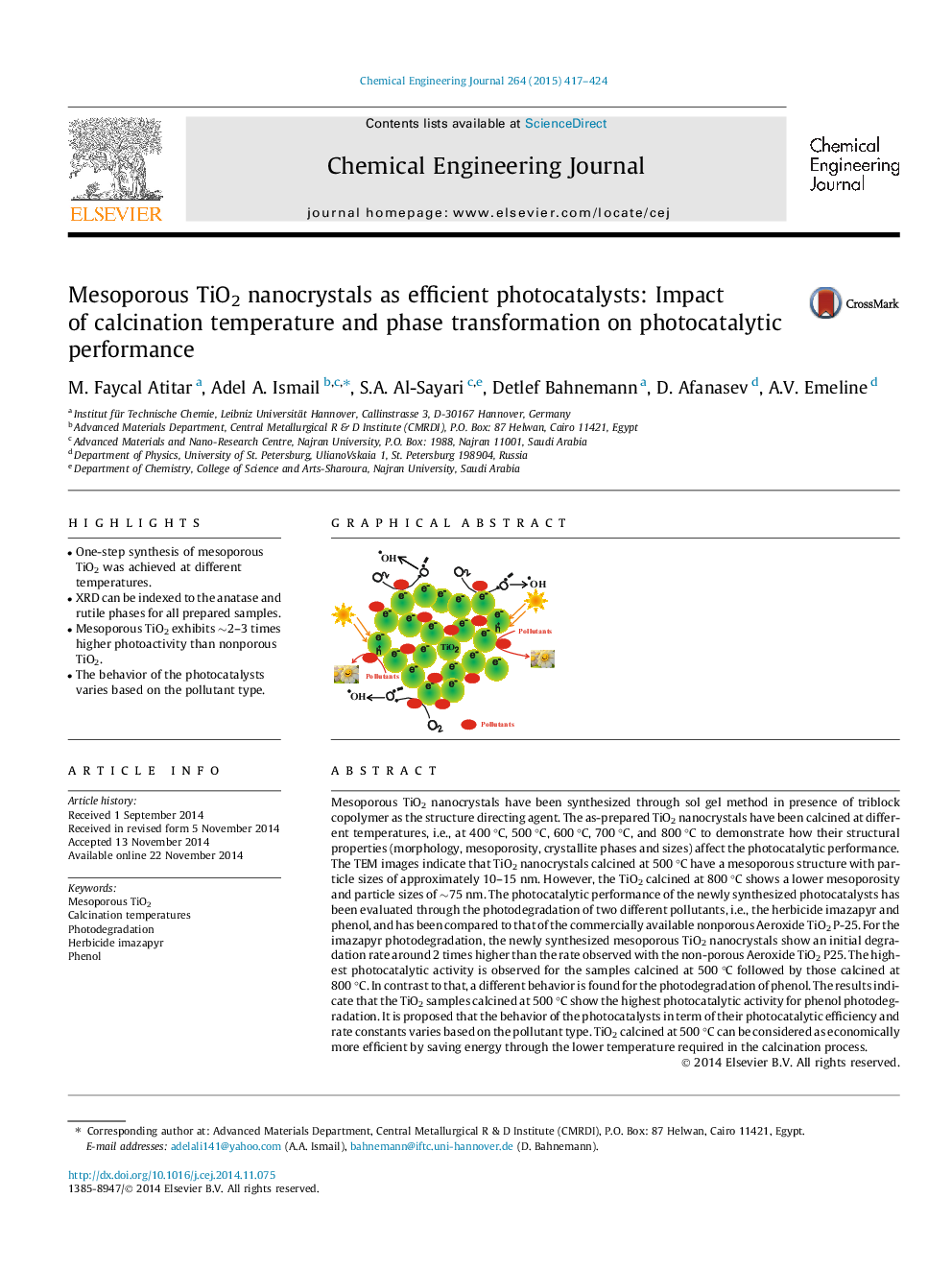| کد مقاله | کد نشریه | سال انتشار | مقاله انگلیسی | نسخه تمام متن |
|---|---|---|---|---|
| 146850 | 456379 | 2015 | 8 صفحه PDF | دانلود رایگان |

• One-step synthesis of mesoporous TiO2 was achieved at different temperatures.
• XRD can be indexed to the anatase and rutile phases for all prepared samples.
• Mesoporous TiO2 exhibits ∼2–3 times higher photoactivity than nonporous TiO2.
• The behavior of the photocatalysts varies based on the pollutant type.
Mesoporous TiO2 nanocrystals have been synthesized through sol gel method in presence of triblock copolymer as the structure directing agent. The as-prepared TiO2 nanocrystals have been calcined at different temperatures, i.e., at 400 °C, 500 °C, 600 °C, 700 °C, and 800 °C to demonstrate how their structural properties (morphology, mesoporosity, crystallite phases and sizes) affect the photocatalytic performance. The TEM images indicate that TiO2 nanocrystals calcined at 500 °C have a mesoporous structure with particle sizes of approximately 10–15 nm. However, the TiO2 calcined at 800 °C shows a lower mesoporosity and particle sizes of ∼75 nm. The photocatalytic performance of the newly synthesized photocatalysts has been evaluated through the photodegradation of two different pollutants, i.e., the herbicide imazapyr and phenol, and has been compared to that of the commercially available nonporous Aeroxide TiO2 P-25. For the imazapyr photodegradation, the newly synthesized mesoporous TiO2 nanocrystals show an initial degradation rate around 2 times higher than the rate observed with the non-porous Aeroxide TiO2 P25. The highest photocatalytic activity is observed for the samples calcined at 500 °C followed by those calcined at 800 °C. In contrast to that, a different behavior is found for the photodegradation of phenol. The results indicate that the TiO2 samples calcined at 500 °C show the highest photocatalytic activity for phenol photodegradation. It is proposed that the behavior of the photocatalysts in term of their photocatalytic efficiency and rate constants varies based on the pollutant type. TiO2 calcined at 500 °C can be considered as economically more efficient by saving energy through the lower temperature required in the calcination process.
Figure optionsDownload as PowerPoint slide
Journal: Chemical Engineering Journal - Volume 264, 15 March 2015, Pages 417–424